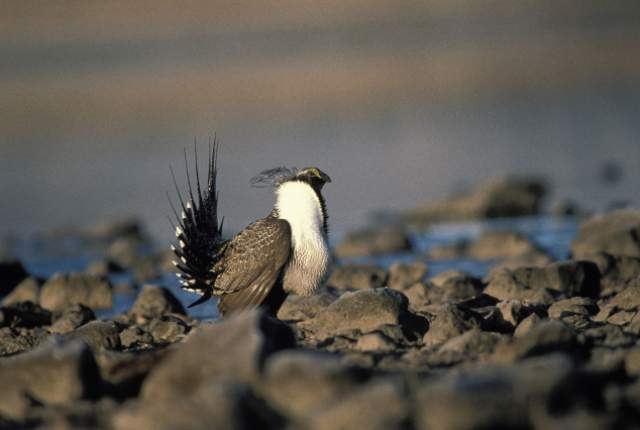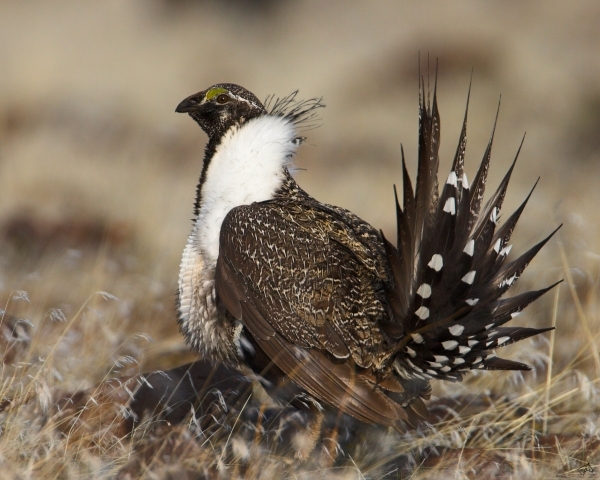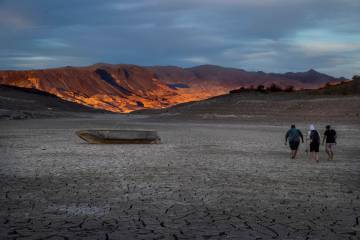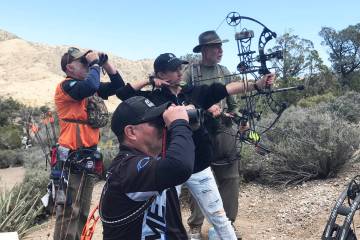Sage grouse decision benefits birds, herds
For the past several years, Nevada's hunters, anglers, ranchers and other outdoorsmen have anxiously awaited an official decision regarding the possible listing of sage grouse as an endangered species.
A decision to list the popular game bird could result in dramatic changes to resource management activities and the western lifestyle, while limiting outdoor recreation opportunities on public lands.
Now the waiting is over, and it appears outdoor enthusiasts can breathe a sigh of relief. On Tuesday, Secretary of the Interior Sally Jewell announced that a listing of the sage grouse is not warranted.
According to a news release by the Department of the Interior, the U.S. Fish and Wildlife Service "reached this determination after evaluating the bird's population status, along with the collective efforts by the BLM and U.S. Forest Service, state agencies, private landowners and other partners to conserve its habitat. Despite long-term population declines, sage grouse remain relatively abundant and well-distributed across the species' 173-million acre range.
"After a thorough analysis of the best available scientific information and taking into account ongoing key conservation efforts and their projected benefits, the FWS has determined the bird does not face the risk of extinction now or in the foreseeable future and therefore does not need protection under the ESA."
Jewell said, "An unprecedented, landscape-scale conservation effort across the western United States has significantly reduced threats to the greater sage grouse across 90 percent of the species' breeding habitat and enabled the U.S. Fish and Wildlife Service (FWS) to conclude that the charismatic rangeland bird does not warrant protection under the Endangered Species Act (ESA)."
She also called the collaborative effort "the largest land conservation effort in U.S. history."
Conservation and sportsmen's organizations were quick to issue statements supporting both the decision to not list the sage grouse and the planning efforts undertaken to protect the bird, its habitat and the West's outdoor heritage.
"Sportsmen have actively engaged in efforts to avoid the necessity of listing the sage grouse under the Endangered Species Act, and we are gratified by the Service's ruling," said Chris Mero, chairman of the Backcountry Hunters and Anglers Nevada chapter. "We will continue to work with Western states and the federal government to implement strong conservation plans for sage grouse habitat. These plans balance access for recreational opportunities like hunting with other uses like ranching and energy development, resulting in a win-win scenario for a range of stakeholders."
While the focus of this conservation effort has been the sage grouse, numerous other species will benefit from any effort that protects the sagebrush ecosystem. Among those is the mule deer, which has struggled in areas where sagebrush habitat has been lost or significantly degraded.
"What's good for the bird is good for the herd," said Collin O'Mara, president and CEO of the National Wildlife Federation, "and (this) decision will help rebuild greater sage grouse populations and conserve sagebrush habitat that supports more than 300 species, including pronghorn, mule deer, and elk. This decision illustrates what the Endangered Species Act is supposed to be all about: galvanizing collaborative efforts to save wildlife species before they're on the brink of extinction."
Robert Gaudet, president of the Nevada Wildlife Federation, said the organization "hopes the state and federal sage grouse conservation plans that received a vote of confidence today from the U.S. Fish and Wildlife Service will point the way to conserving sage grouse and all the other Nevada species."
Continued collaboration between natural agencies and the wide spectrum of interest groups, including sportsmen and women, will be the key to long-term conservation success, not only for sage grouse but also for the multiple other species we enjoy hunting, catching and viewing.
It also is the key for protecting hunting, fishing, ranching and other outdoor interests into the future.
Freelance writer Doug Nielsen is a conservation educator for the Nevada Department of Wildlife. His "In the Outdoors" column, published Thursday, is not affiliated with or endorsed by the NDOW. Any opinions he states in his column are his own. He can be reached at intheoutdoorslv@gmail.com.























